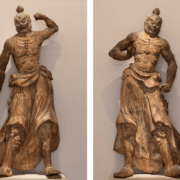Do you suffer from chronic headaches? Headaches are one of the most common nervous system disorders.
Up to 75% of adults reported having a headache in the last year, with 30% or more reporting a migraine. 4% of people suffer from headaches more than 15 days every month. This decreases a person’s health, productivity, and quality of life.
Most people with headaches also suffer from migraines. Are you confused about the difference between a headache vs. migraine? Here’s everything you need to know about these two common conditions.
Headache
Headache vs. migraine, which one is it?
Different types of headaches come with different sensations. The most common types are tension headaches and migraines. Both of these types of headaches classify as primary headaches.
Headache sensations may manifest as pulsing, sharp, and throbbing pain. Tension headaches happen on both sides of your head and feel like a dull sensation.
Tension Headaches
Tension headaches are primary headaches, meaning they aren’t caused by any other condition. Conversely, secondary headaches refer to headaches caused by other underlying conditions.
There’s a lot of overlap between headaches and migraines. Both migraines and headaches cause head pain but in different ways. Migraine and headache symptoms may also vary.
Tension headaches are often confused with migraines. Tension headaches cause moderate pain on both sides of the head. This feeling of pain is like a tight pressure in your head.
When you have a tension headache, you may feel like your head is being squeezed on both sides. Symptoms may also include temple soreness. You will also feel pain and tightness in your neck or shoulders.
Migraines and tension headaches have similar symptoms but have different severities and pain. The two common types of tension headaches are chronic and episodic.
You may experience an episodic tension headache once or twice a month between 30 minutes to several days. Chronic tension headaches happen more than 15 days a month. This type of headache can last between a few hours to several days.
Sometimes random over-the-counter medicine doesn’t cut it. Specialists can help you get better headache treatment. Get the best headache treatment today with nationalheadacheinstitute.com.
Cluster Headache
Another type of primary headache is cluster headaches. This headache happens at the same time every day or every night for several weeks. The pain from cluster headaches usually lasts for three hours.
Since cluster headaches occur at night, they usually affect your sleep and wake you up from sleep. These headaches are less frequent than migraines and usually appear twice a year. Since they happen in spring and fall, most people mistake them for allergies.
Other symptoms include nausea, confusion, and blurred vision.
Migraine
Most people who have migraines suffer from pain from only one side of their brain. If the pain is equal on both sides, it’s a tension headache. Migraine can also be on both sides but feels prominent on one side only.
There are many factors to consider when diagnosing migraines. These include your age, family history of migraines, and medical history. Take these factors into consideration to know what type of migraine you have.
Age is a big factor in diagnosing and treating migraines. Children and adults experience migraines differently. Unlike adults, children experiencing migraines experience pain on both sides of their heads.
Can Children Experience Migraines?
Abdominal migraines can last between 1 to 72 hours. This often gets confused as stomach aches due to its primary symptom being stomachache.
If you had abdominal migraines as a child, you are more likely to have migraines when you become an adult.
Migraine treatment is also different for children compared to adults. Children and adolescents have different responses to adult migraine medications. If your child suffers from headaches, consult a pediatric headache specialist.
Determining Migraine Patterns
Migraine pattern is also important to assess what kind of migraine you suffer from. Take note of things like the time of day, the number of migraines, and your symptoms. It is also important to note your triggers and hormones.
If your migraines happen more than 15 days a month, you might be suffering from chronic migraine. Always check if you have other symptoms, which can be symptoms of something else. Hormone changes such as periods are also important to note in migraine patterns.
Some women suffer from Pure Menstrual Migraines. These kinds of migraines occur in 60% of cycles. Pure Menstrual Migraines usually happen 1-2 days after your period starts.
Migraines may also come with unique symptoms such as sensitivity to light, sound, and nausea. This is often the best way to determine if you have a migraine or a headache. Some people who suffer from migraines also have prodrome or aura.
Prodrome is an early symptom of a disease. These can range from a simple cold to a heart attack. You may feel other symptoms like fatigue, depression, cravings, and muscle stiffness.
Some people also have a migraine aura before they suffer from a migraine. Migraine with aura often manifests 10 to 30 minutes before the headache. Aura may have visual symptoms, such as blind spots and flashing lights.
More severe aura symptoms may include impairments in your senses, such as touch or taste. Some may also experience partial loss of vision or speech changes.
How Do You Treat a Migraine?
Migraine drugs have two classes: treatment and preventive. A better understanding of migraine medication is important to understand your migraine profile. Taking too much or the wrong medication can cause medication overuse headaches.
Some drugs also cause side effects that trigger migraines. Listing triggers are important to prevent migraines as much as possible. There is also preventive medicine you can take to avoid migraines.
Everyone has a different experience with migraine. That is why it is important to have an individualized approach. It is best to consult a headache specialist so they can find a solution for your unique migraine profile.
The Complete Guide to Headache vs. Migraine
Now that you know the difference between a headache vs. migraine, you are sure to get the right treatment. Headaches and migraines can feel similar, but the key difference is which part of the head hurts.
Want to know how to get instant relief from your headaches and migraines? Check out our other blog posts to learn more.












Comments